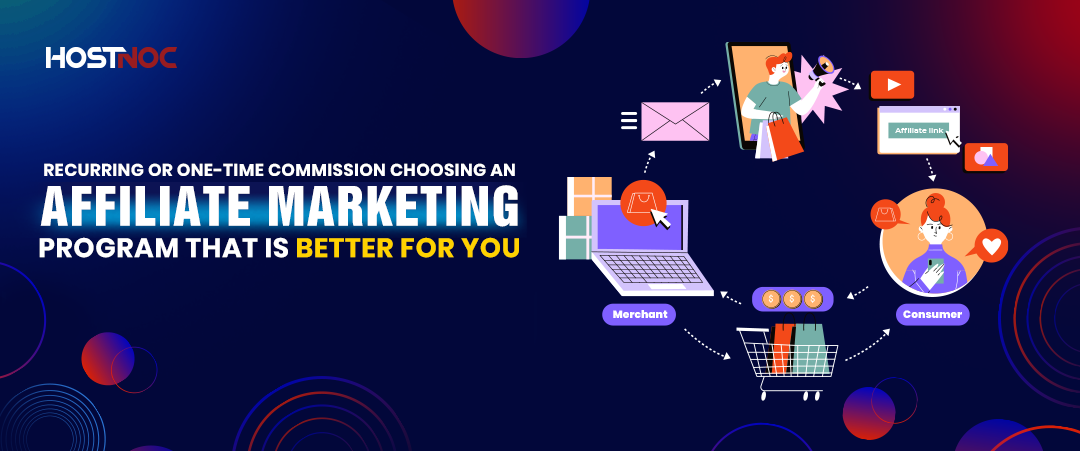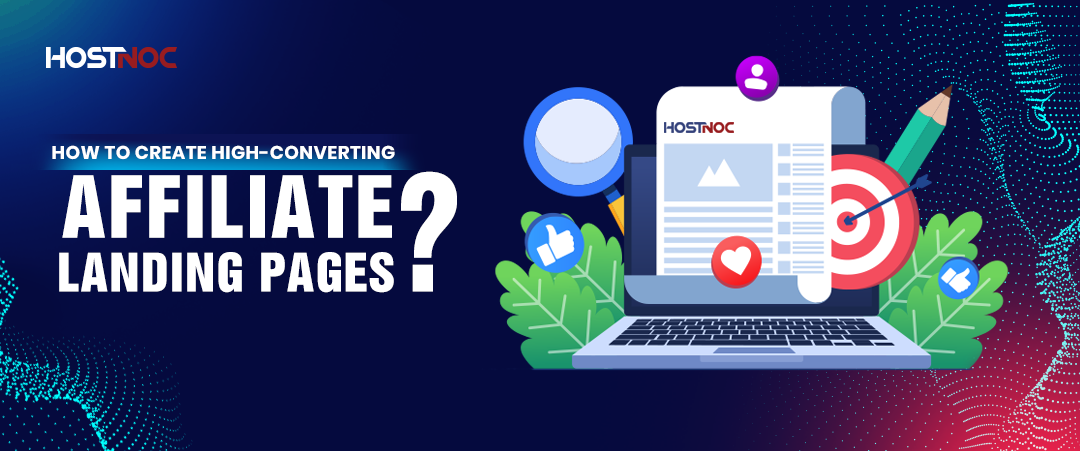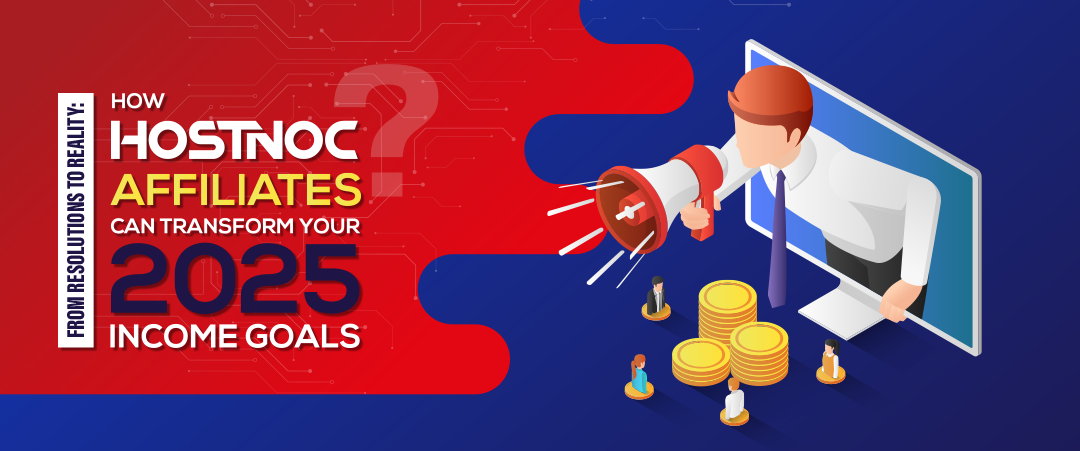Blogs

Recurring or One-Time Commission: Choosing an Affiliate Marketing Program That Is Better for You
December 27, 2024
HostNOC Affiliate Program: Earn Big by Promoting High-Performance Hosting Solutions
December 29, 2024Affiliate marketing thrives on effective landing pages and designing one that converts well requires strategic planning. Here is how to craft high converting affiliate landing pages to maximize conversions and boost affiliate income.
What Are Landing Pages and Why Are They Important?
A landing page is a standalone web page created for a specific marketing campaign. It is where potential customers land after clicking on a link in an ad, email or social media post. For affiliate marketers, these pages are designed to drive conversions by directing visitors to perform actions like signing up, making a purchase or clicking on an affiliate link.
High-converting affiliate landing pages are crucial because they help you:
- Increase lead generation and sales
- Reduce bounce rates
- Deliver targeted content that aligns with visitor intent.
Key Features of High-Converting Affiliate Landing Pages
Here are some of the key features of High-Converting Affiliate Landing Pages.
1. Clear Value Proposition
Your value proposition explains why a visitor should take action. Use a compelling headline, supporting subheadline and clear benefits to immediately capture attention. For example, if you are promoting a web hosting service, emphasize speed, uptime and affordability in the headline.
2. Minimalist Design
Clutter distracts visitors from your call-to-action. Use a clean, responsive design with ample white space, ensuring your call to action button and essential information are the focal points.
3. Engaging Visuals
Include high-quality images, videos or infographics that showcase the product or service you are promoting. For example, a short demo video explaining the benefits of the product can boost engagement.
4. Targeted Copywriting
Speak directly to your audience’s pain points and desires. Use persuasive language and testimonials to build trust. Highlight unique features that differentiate your affiliate product.
5. Strong CTA Buttons
Your call to action button should be prominently displayed with action-oriented copy like “Claim Your Discount”. Use contrasting colors on call to action buttons to make them stand out.
Types of Affiliate Landing Pages
Here are some common types of affiliate landing pages.
1. Product Review Pages
Review pages are highly effective for affiliate marketing. Provide honest, detailed insights into the product or service, using comparison charts, user testimonials and ratings.
2. Lead Capture Pages
Designed to collect emails or leads, these pages typically offer incentives like free eBooks or discount coupons in exchange for user information.
3. Click-Through Pages
These pages provide concise information and encourage visitors to click through to the affiliate’s website for more details. They often include a product description, benefits and a call to action button.
4. Video Landing Pages
Videos can increase conversions by 80%, making them an excellent option for explaining complex products or showcasing product demos.
Best Practices for Affiliate Landing Pages
Here are some of the best practices you can adopt to create high converting affiliate landing pages.
1. Mobile Optimization
With over 50% of internet traffic coming from mobile devices, ensure your landing page is responsive and loads quickly on all screen sizes.
2. A/B Testing
Experiment with different headlines, visuals, call to action placements and copy styles to find what resonates best with your audience.
3. SEO Optimization
Optimize your landing page with relevant keywords like high converting affiliate landing pages to attract organic traffic. Include meta tags, descriptions and internal links to improve visibility.
4. Fast Loading Speed
Pages that take more than three seconds to load can lose up to 40% of visitors. Use tools like Google PageSpeed Insights to improve loading times.
5. Credibility Indicators
Include trust signals such as customer reviews, security badges or endorsements to build credibility and reduce hesitation.
Common Mistakes to Avoid
Here are some of the common mistakes you should avoid.
1. Overloading with Information
Avoid overwhelming visitors with too much text or too many options. Stick to concise, actionable content.
2. Ignoring Analytics
Track metrics like bounce rate, click-through rate and conversion rate to identify weak points and improve your page.
3. Generic Design
Your landing page should align with your brand and the product you are promoting. A generic or outdated design can reduce trust.
Measuring the Success of Your Landing Pages
Key performance indicators (KPIs) help you assess the effectiveness of your landing pages. Monitor the following metrics:
Conversion Rate:
The percentage of visitors who complete the desired action.
Bounce Rate:
The percentage of visitors who leave without interacting.
Click-Through Rate (CTR):
The percentage of visitors clicking your affiliate link or call to action.
Read more: How To Create a High-Converting and Profitable Affiliate Marketing Funnel?
Use tools like Google Analytics or affiliate tracking software to measure performance and identify areas for improvement.
Conclusion
A high-converting affiliate landing page is a critical tool for affiliate marketers. By focusing on clear messaging, engaging design and strong call to actions, you can turn visitors into loyal customers. Regularly test and optimize your pages to maximize their effectiveness and stay ahead in the competitive world of affiliate marketing.
Mastering high converting affiliate landing pages is your ticket to boosting conversions and growing your affiliate income. Apply these strategies today to create landing pages that drive results! Did this article help you in creating a high converting landing page for your business? Share your feedback with us in the comments section below.
Muhammad Osama
Featured Post
ServiceNow To Acquire Data.World for AI-Driven Catalog Governance Technology
ServiceNow to acquire Data.World, a leading provider of data governance and cataloging technology, in a move designed to bolster its AI-driven data governance capabilities. The acquisition, […]
From Resolutions to Reality: How HostNOC Affiliates Can Transform Your 2025 Income Goals
Table of Contents The Power of Affiliate Marketing in 2025 Why Choose HostNOC for Affiliate Marketing? High Commission Rates: Wide Range of Services: Reputation and Trust: […]
FastHost vs HOSTNOC: Which One You Should Choose?
Table of Contents FastHost vs HOSTNOC: Which One You Should Choose? 1. Hosting Services 2. Performance and Reliability 3. Customer Support 4. Pricing 5. Security 6. […]






